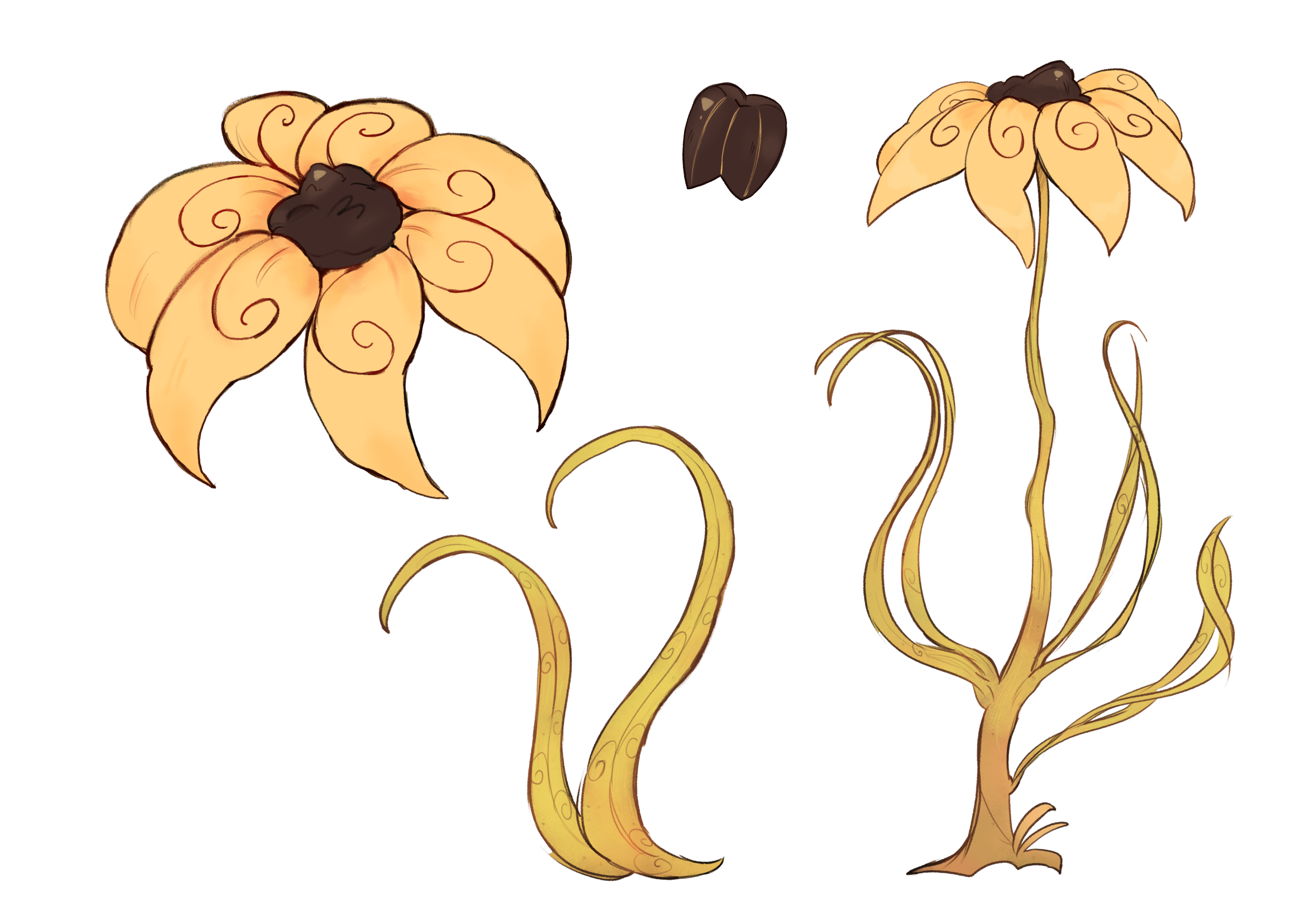![]() Saltshaker
Saltshaker
Cultivated

✽ Saltshaker ✽
Cultivated / ingredient
A genus of plants of the Inneusaceae (fire) family.
One of the most common representatives, it is also the most unusual. Saltshaker reaches a height of about 3 meters, has spreading flowers with petals of about 50 centimeters each.
In comparison with the Crystal Acacia, which also receives the necessary nutrients from all the magic in the soil, plants of this family are able to filter only particles of fire magic in small quantities.
Saltshaker, in the period close to the end of the life of the flower, causes an increase in the flow of magic, directing the receptacle with the flower directly to the sun. The seeds begin to heat up to the highest temperatures. Those that are located in the middle, due to the scorching sun, supplemented by magic, are fried, as if in an oven. The marginal (side) seeds are spread by autochory. Falling on the surface of the soil, they are not as exposed to those extreme temperatures, and survive for further growth. The seeds are small, their number reaches more than ten thousand, three thousand of which are marginal.
Habitat - Sand City.
The seeds of the Saltshaker through a natural process turn into black ash, the siftings of which are processed by plumii into widely available black salt. It gives off a soft, barely noticeable floral aroma, and is used in cooking.
The flowers of the plant burn up at the final stage of their life, there is no particular opportunity to use them.
The large leaves of the Saltshaker, on the contrary, have found wide application in various fields. The nomadic Rikki tribes preserve the spreading patterned leaves to cook tamales with them - a "pie" made of starice flour, wrapped in a leaf, can have any filling, and is steamed.
Because of the pleasant smell, many dishes in Sand City are usually served on the leaves of the Saltshaker. From the strings of the disassembled leaf plumii make ropes, threads, hats for desert travel, skilled craftsmen weave shoes. Over time, the structure of such products does not dry out, but becomes stronger and more elastic.
✽ Солевик ✽
Культивирован / ингредиент
Род растений семейства Иннеусовых (огненных). Один из самых распространенных представителей, он же самый необычный. Солевик достигает в высоту около 3 метров, имеет раскидистые цветы длиной 50 сантиметров.
В сравнении с Кристалльной акацией, так же получающей все необходимые питательные вещества из магии в почве, растения этого семейства способны фильтровать только частицы магии огня в небольших количествах.
В период, близкий к окончанию жизни, солевик вызывает усиление поступления волшебства, направляя цветоложе с цветком прямо к солнцу. Семена начинают нагреваться до высочайших температур. Те, что располагаются посередине, прожариваются из-за лучей солнца, дополненных магией. Краевые (боковые) семена распространяются автохорией. Попадая на поверхность почвы, они не подвергаются тем экстремальным температурам и выживают. Семена мелкие, их количество достигает отметки в более десяти тысяч, три тысячи из которых являются краевыми.
Ареал произрастания — Песчаный город.
Семена солевика естественным образом превращаются в черную золу, отсевки которой плюмии перерабатывают в повсеместно доступную черную соль. Она отдает мягким, еле ощутимым цветочным ароматом, используется в кулинарии.
Цветы растения сгорают на финальном этапе своей жизни, их использование не представляется возможным.
Крупные листья Солевика, напротив, сыскали широкое применение в разных сферах. Кочующие племена рикки сохраняют раскидистые узорчатые листья, чтобы готовить с их помощью тамале — "пирог" из звездорисовой муки, завернутый в лист; может иметь любую начинку, готовится на пару.
Из-за приятного запаха многие блюда в Песчаном городе принято подавать именно на листьях солевика. Из лоскутов разделенного листа плюмии делают веревки, нити, шляпы для путешествий по пустыне, особые умельцы плетут обувь. С течением времени структура таких изделий не рассыхается, а становится более крепкой и эластичной.
